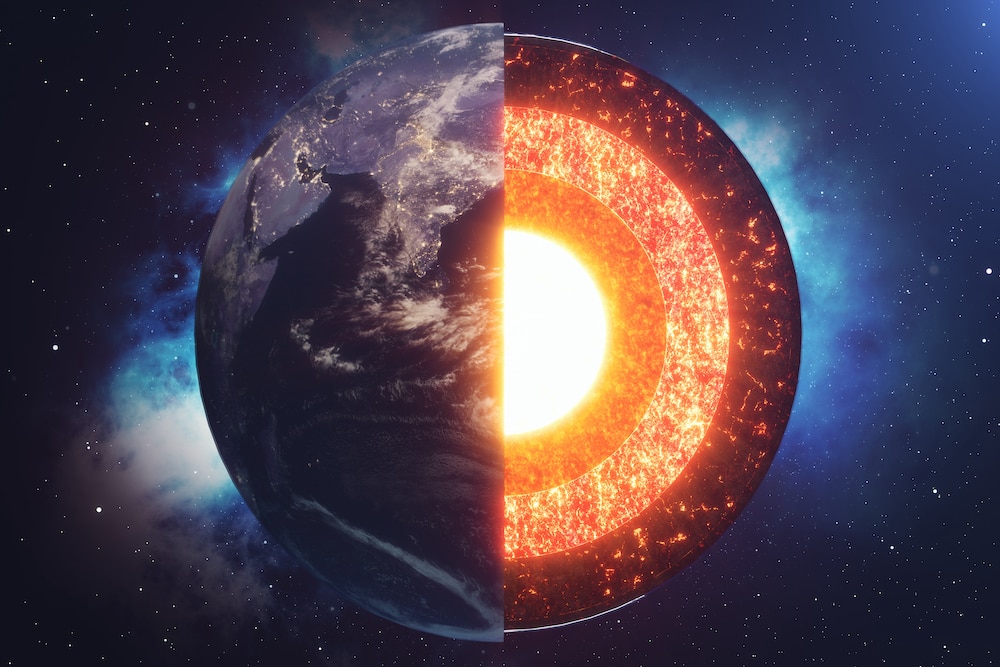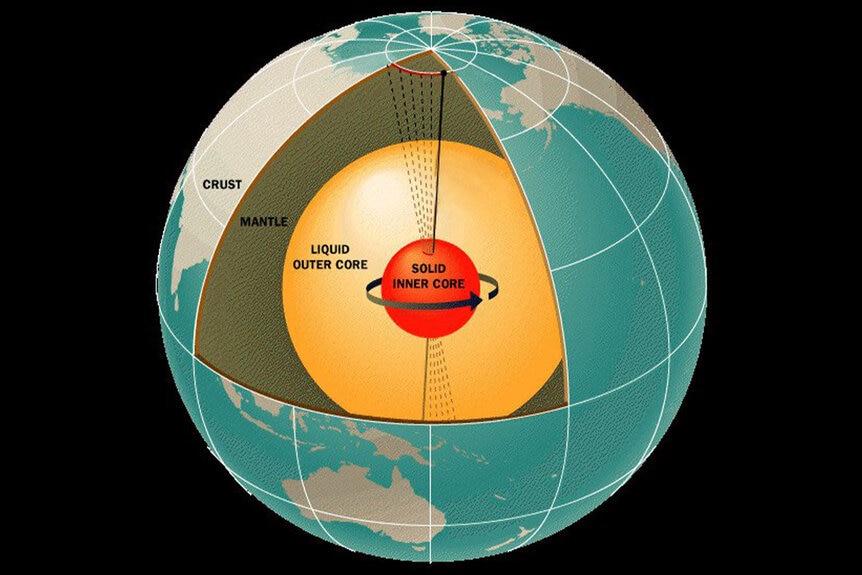Create a free profile to get unlimited access to exclusive videos, sweepstakes, and more!
New study suggests the Earth’s inner core might have its own innermost core
It's inner cores all the way down.

Over the last several thousand years, humanity has done a pretty good job of tossing a lasso around nature, hog-tying it, and tucking it away in a corner. From moment to moment, most of us walk around like we’re in control of the show, both individually and as a species. But there are things with immense power which we cannot control and which we don’t fully understand, and one of those things is right beneath our feet. It’s the reason that disaster movies never really go out of style. We all know we’re only one bad day away from combing through a pile of rubble.
Of course, not all disasters are created equally. An earthquake or tornado might threaten a significant number of people, but they aren’t typically global threats. Most of humanity would survive to mourn those who were lost. But if the Earth’s core starts acting up, then we all might be in some trouble. That’s the scenario imagined in the 2005 disaster film Descent, streaming now on Peacock. The movie has a rock solid cast, with performances from Natalie Brown, Luke Perry, and Michael Dorn. If only the ground beneath their feet were as solid.
When a secret government project goes wrong (isn’t that always the way?), Earth’s tectonic plates start violently shifting, unleashing a global wave of volcanic activity. Enter Dr. Jake Rollins (Perry), a crack scientist with a plan so wild it just might work. In order to prevent an extinction level calamity, scientists drill into the Earth’s core, detonate a bomb, and hope for the best. The trouble is, we now know that those scientists were navigating on an incomplete roadmap. According to a recent study, published in the journal Nature Communications, even the Earth’s inner core has its own inner core.
RELATED: Did the Earth's core really stop spinning or reverse direction?
Understanding what’s happening deep inside of our own planet isn’t a simple endeavor. Despite being literally beneath our feet, getting deep under Earth’s surface gets very difficult, very quickly. In the 1970s, scientists began digging a 9-inch-wide hole in Russia’s Pechengsky District, with the intent of digging the deepest hole in human history. After nine years of drilling, they achieved their goal. Today, the Koa Superdeep Borehole remains the deepest hole in the world, running roughly 7.6 miles (12.3 kilometers) into the Earth. That’s a pretty impressive hole, to be sure, but it’s only about one fifth of one percent of Earth’s 3,958.8 mile (6371 kilometer) diameter. If we want to see what’s happening in the core, digging is never going to get us there.
Instead of direct observation, scientists rely on the interactions of vibrations as they move through the different parts of the planet to infer what it’s made of. Think about a time when someone tried to call to you from another room. Their voice was muffled and distorted as it traveled through wood, drywall, paint, air, and more on its way to you. Vibrations traveling through the Earth behave in the same ways, and scientists can interpret the differences in their behavior (the muffling, so to speak) to build a model of Earth’s guts.
The model most of us have in our heads includes the Earth’s crust or surface, the liquid magma of the mantle, the nickel-iron outer core, and the inner core. Cut the Earth in half and those are the layers you’re certain to find, just ask any elementary student doing a science project. Students of the future, however, are going to have to include a new fifth layer: the innermost inner core.
The idea for an innermost core was first proposed by two Cambridge scientists, Miaki Ishii and Adam M. Dziewoński, more than 20 years ago. They based their hypothesis on seismic waves passing through the core, but their findings weren’t sufficient to convince everyone. The new study, carried out by Thanh-Son Phạm and Hrvoje Tkalčić, both from the Research School of Earth Sciences at the Australian National University, picks up where Ishii and Dziewoński left off and provides additional measurements which appear to confirm the existence of an innermost core roughly 400 miles (650 kilometers) in diameter.
We can’t smack the Earth hard enough to cause vibrations that travel through the core (and why would we want to?) but earthquakes can. Ideally, if you want to measure the core, you want a seismometer on the exact opposite side of the planet from an earthquake’s epicenter. Unfortunately for seismologists, most of the planet is covered over with water, making that difficult to pull off. Instead, researchers relied on the fact that seismic waves bounce back once they reach the other side of the planet.
RELATED: Asia, Australia & the Americas on a collision course to become a supercontinent in 280 million years
Instead of needing a seismometer sitting across the planetary table from an earthquake, having one near the epicenter allowed the scientists to pick up on vibrations traveling through the core as they bounced back and forth. Pham and Tkalčić looked through hundreds of seismic events in search of bouncing waves which traveled through the core, and they found them.
Their findings appear to confirm the existence of an innermost core which is distinctively different from the rest of the inner core but without a clear boundary. Instead, the transition from inner core to innermost core appears subtle and gradual. In addition to immediately making every geology textbook in the world outdated, the discovery provides valuable information about the formation and evolution of our planet. Those findings could also extend to other worlds in the cosmos, giving us a clearer view into how planets form and change over time.
Fortunately for us, there’s no evidence that the innermost core poses any threat to those of us on the surface. For that, you’ll have to go to the movies. Check out Descent, streaming now on Peacock!



























